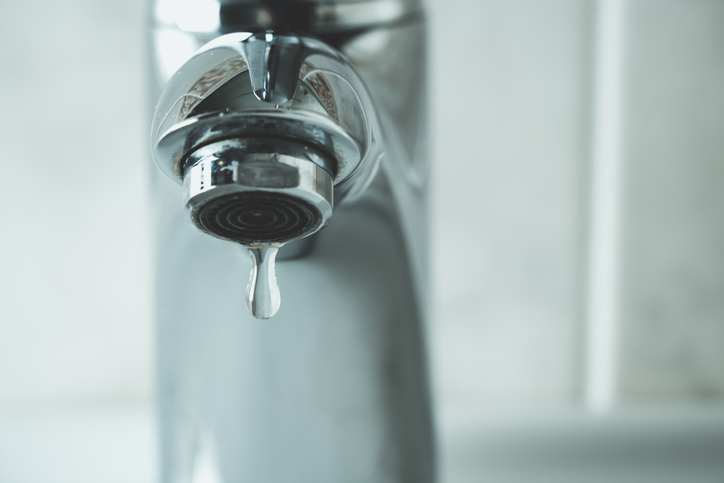Water, the molecule that comprises the majority of your body, your planet, and plays a small but important role in your atmosphere, is essential for your survival. There is a great bevy of concerns with drinking water, few more prevalent than the issue of lead content. The matter is clear: lead is harmful to health, especially in the case of children. In fact, the EPA and the Centers for Disease Control and Prevention (CDC) agree that there is no known safe level of lead in a child’s blood.
An American National Standard, NSF/ANSI 372, helps meet this public health and regulatory need by establishing procedures for determining lead content (helping users meet the Safe Water Drinking Act definition of “lead free”) in drinking water system components.
The History of Lead in Drinking Water Supplies
Metal use was common in the ancient world, with the Iron Age and Bronze Age named after the materials utilized for their contemporaneous tool assemblages. The Ancient Romans used lead extensively, calling it plumbum, which is from where we derive the chemical symbol Pb. The Roman aqueducts transported fresh water to highly populated areas, but did so through lead pipes. In fact, the word plumbing derives from plumbum, with plumber literally meaning “a worker in any sort of lead.”
Jump ahead to the new world, and as early as the late 1800s in the United States, lead pipes carrying drinking water were a well-recognized cause of lead poisoning. Nonetheless, prior to 1951, lead persisted as the industry standard for drinking water pipes. Lead pipes were not banned until 1986, when Congress approved amendments to the Safe Drinking Water Act.
How US Regulations Address Lead in Drinking Water
Since 1974, the Safe Water Drinking Act (SWDA) and its amendments have strengthened public health protection. The 1986 amendment to the SWDA prohibited the use of pipes, solder, or flux that were not “lead free” in public water systems or plumbing in facilities providing water for human consumption. At the time, lead free was defined as solder and flux with no more than 0.2% lead and pipes with no more than 8%.
This definition changed with the 2011 Reduction of Lead in Drinking Water Act (RLDWA). It amended Section 1417 of the SDWA so drinking water products sold or installed for use in public water systems, as well as plumbing in facilities, need to meet a weighted average of not more than 0.25 percent lead.
Specifically, the Act now defines “lead free” as:
“not containing more than 0.2 percent lead when used with respect to solder and flux”
and
“not more than a weighted average of 0.25 percent lead when used with respect to the wetted surfaces of pipes, pipe fittings, plumbing fittings, and fixtures.”
NSF/ANSI 61 and Testing Drinking Water System Components
In the US, drinking water components are tested to the NSF/ANSI/CAN 61. This American National Standard, which specifies procedures to determine the health effects of drinking water system components, emerged in 1988 after a consortium led by NSF International agreed to develop voluntary third-party consensus standards and a certification program for all direct and indirect water additives. This also culminated in the initial publication of NSF/ANSI/CAN 60, which establishes minimum health effects for chemicals used for treating drinking water.
In the past, Annex G, “Weighted average lead content evaluation procedure to a 0.25% lead requirement,” of ANSI 61 contained procedures for determining the lead content of drinking water system components. This information, however, was retired from NSF/ANSI 61 in October 2013.
This content has since been moved to another standard document, NSF/ANSI/CAN 372-2022: Drinking Water System Components – Lead Content.
NSF/ANSI 372 for Determining the Lead Content in Drinking Water System Components
While NSF/ANSI 61 establishes limits for lead that may migrate into drinking water from the water contact materials, NSF/ANSI 372 establishes a limit on the amount of lead that may be contained within the water contact materials in a drinking water contact product. It applies to any drinking water system component that conveys or dispenses water for human consumption through drinking or cooking.
In meeting this need, the standard and helps certifying organizations, utilities, regulatory agencies, and manufacturers provide assurances that meet public health requirements. NSF/ANSI 372 outlines general requirements relating to the lead content of solders and fluxes, the formula for determining weighted average lead content, lead content verification testing, lead content analytics procedures, and the percentage lead content of liners, coatings, and lead removal technologies.
NSF/ANSI 372 may be used in conjunction with NSF/ANSI 61 to minimize lead from drinking water products, as well as alongside other standards.
NSF/ANSI 372-2022: Drinking Water System Components – Lead Content is available on the ANSI Webstore.
